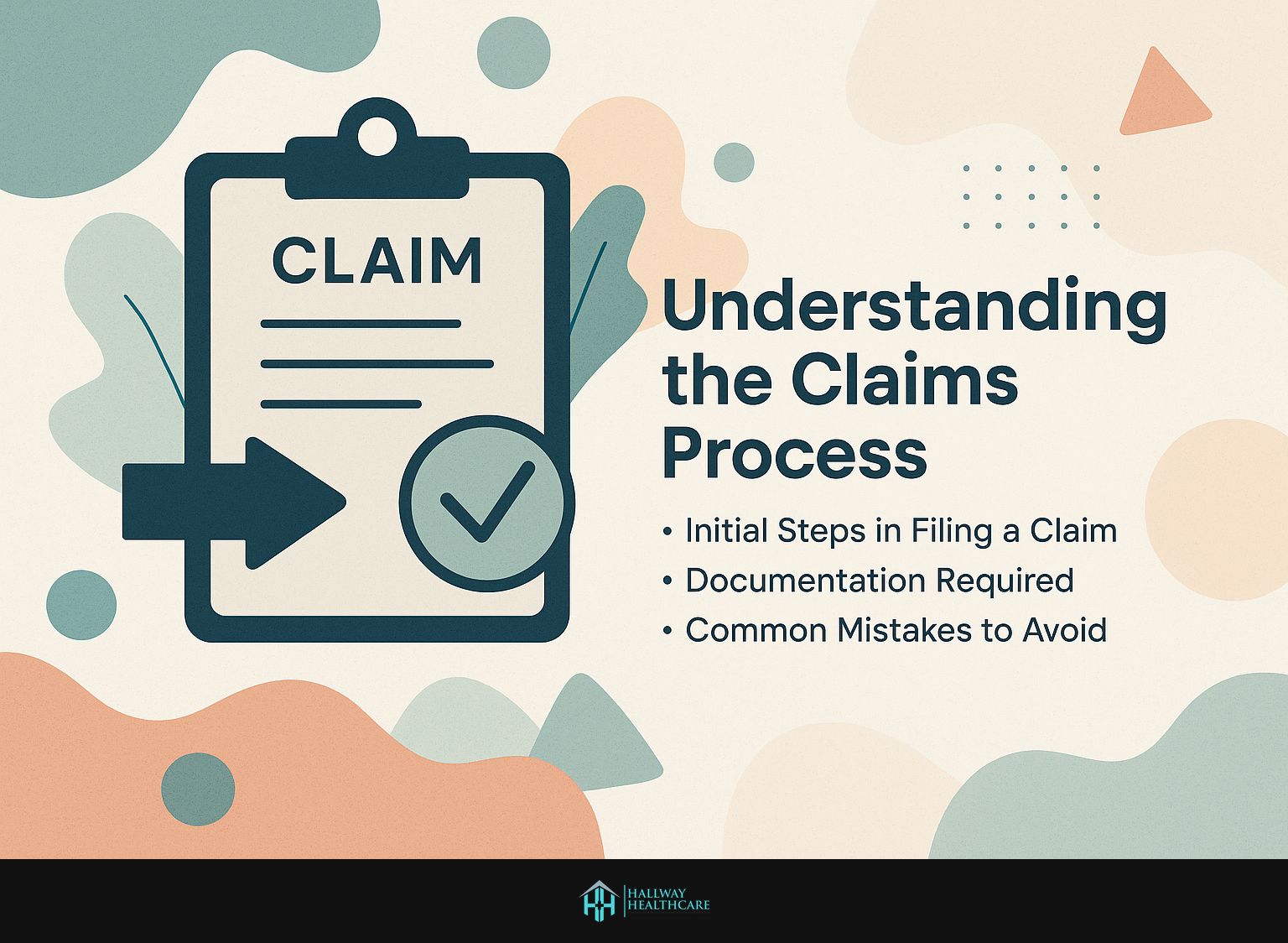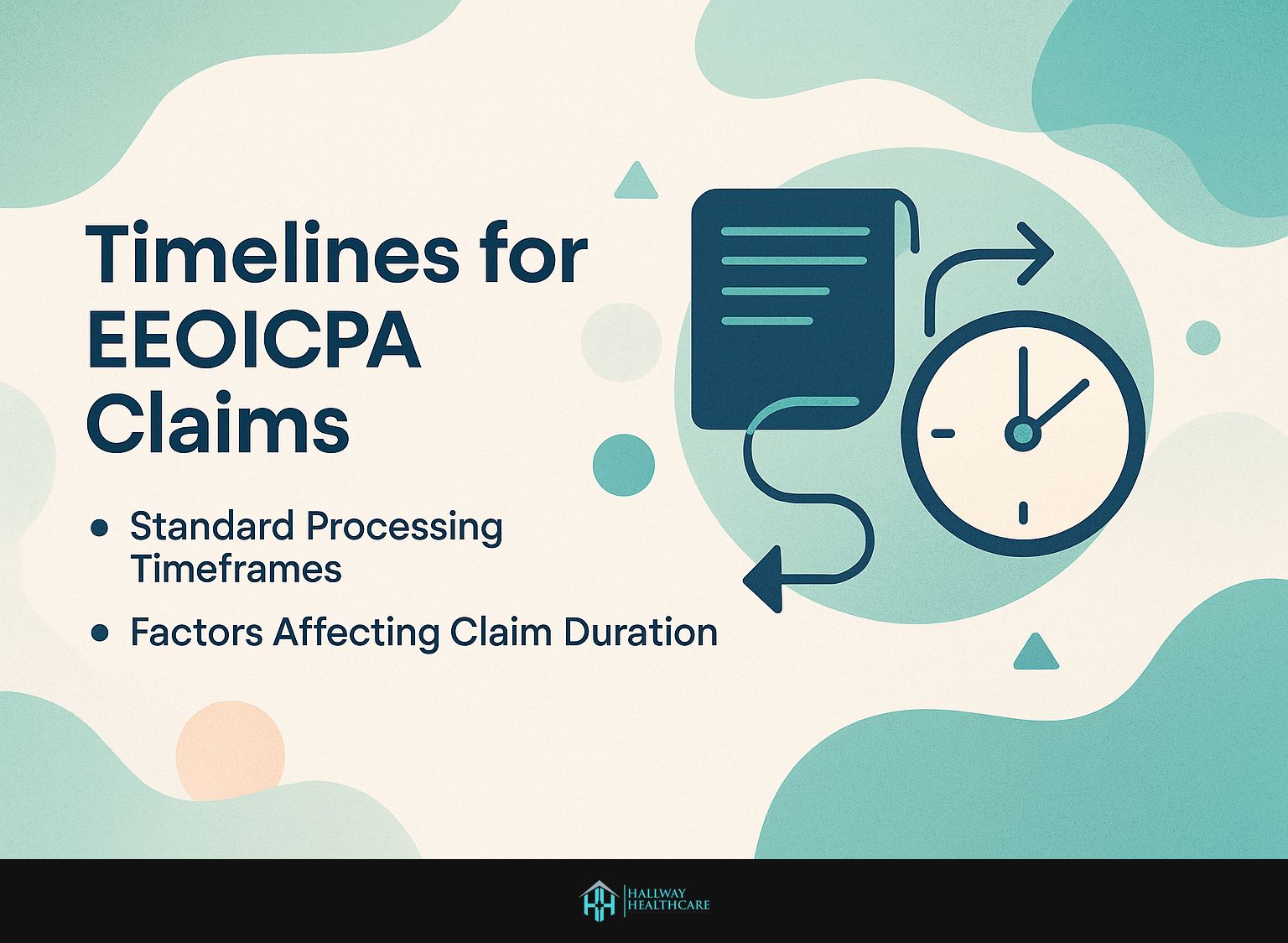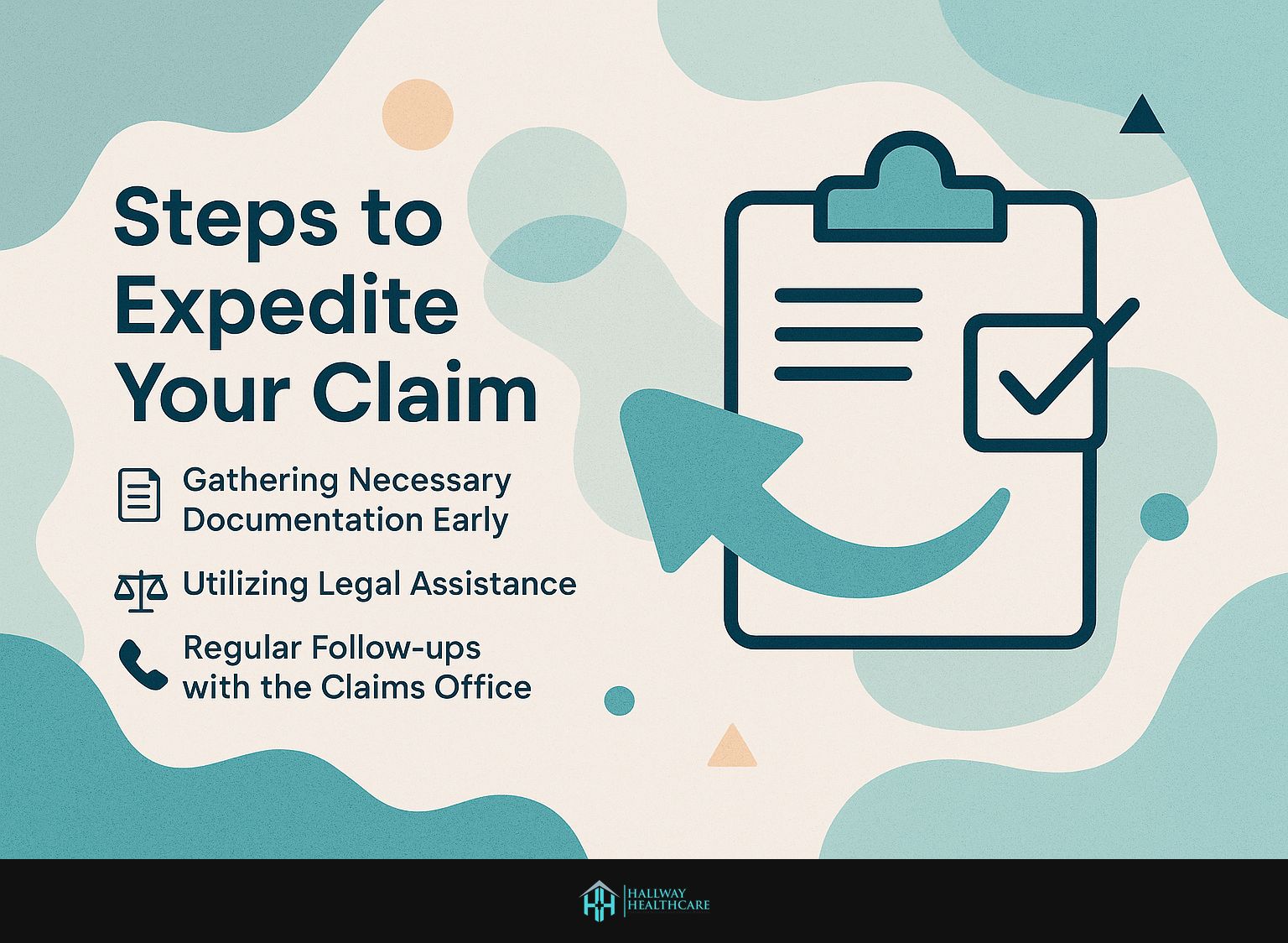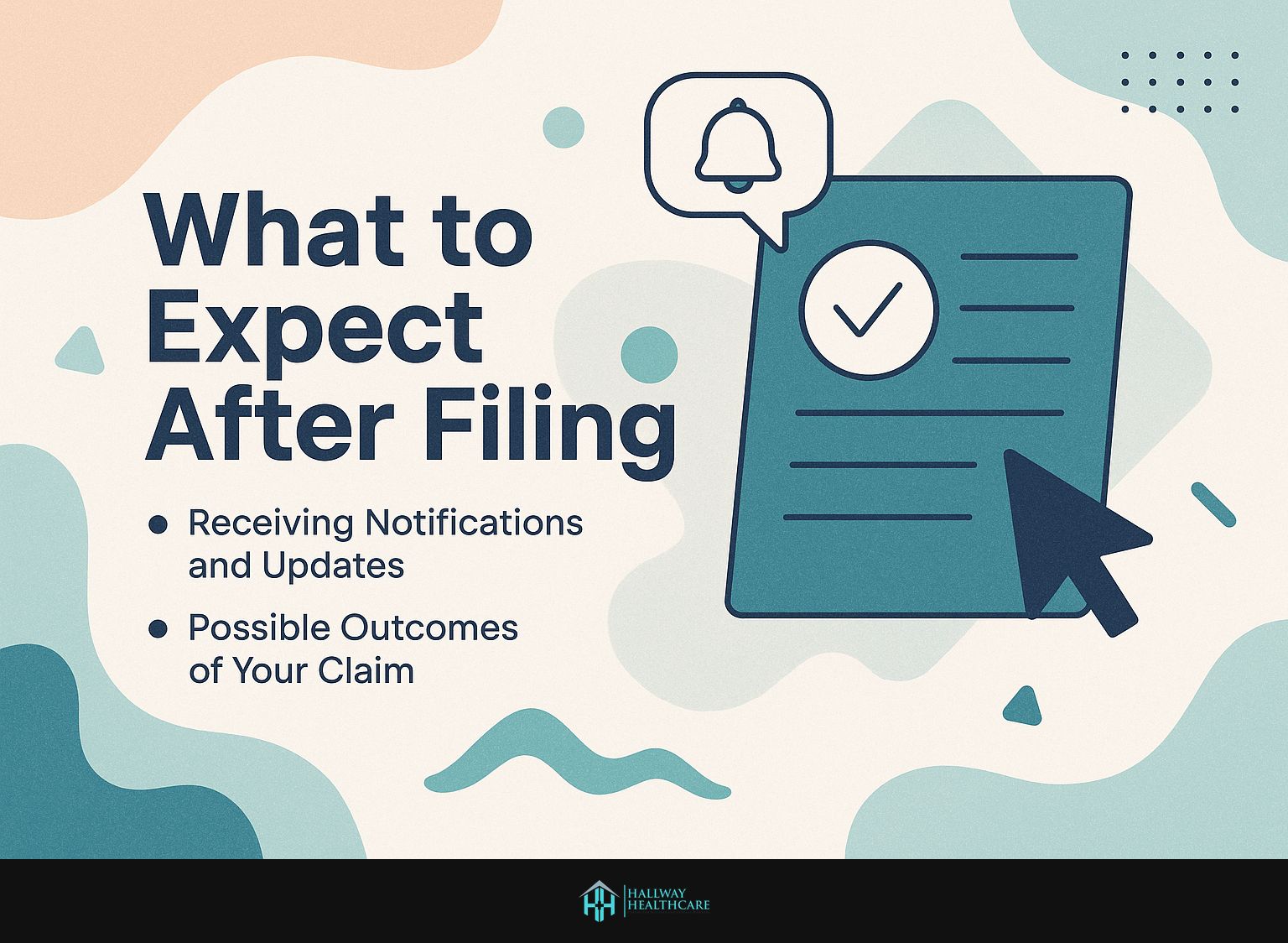
Navigating the EEOICPA claims process is challenging for nuclear energy workers. They seek compensation for illnesses caused by exposure under the Energy Employees Occupational Illness Compensation Program. Knowing how long claims typically take is crucial for claimants. This includes claims under Part B for conditions like radiogenic cancers and chronic beryllium disease. This guide breaks down the timelines, essential steps, including proving employment at a covered Department of Energy facility, and tips to expedite your claim, ensuring you receive the benefits you deserve as efficiently as possible.
Key Takeaways:
- Filing an EEOICPA claim can be a lengthy process, but it is important to file in a timely manner.
- Timelines for EEOICPA claims can vary, but there are steps you can take to speed up the process, such as gathering necessary documentation early and utilizing legal assistance.
- Understanding the review process and addressing issues with incomplete applications can help prevent common delays in claims processing.
Overview of EEOICPA
The Energy Employees Occupational Illness Compensation Program Act (EEOICPA) was established to provide compensation to workers who were exposed to hazardous substances while employed by the Department of Energy or its contractors.
Eligibility for this program is determined by the nature of the exposure and the individual’s employment history. Workers must provide evidence of their employment at designated facilities and document exposure to radiation, beryllium, or silica.
Compensation benefits include medical coverage for illnesses from hazardous exposure, like chronic silicosis and beryllium sensitivity. Lump-sum payments can reach up to $400,000 for diagnosed conditions under the Special Exposure Cohort. Additionally, survivor benefits for deceased workers may include medical expenses and health-related housing modifications, ensuring protection for both current and former employees, along with their families, under this legislation.
To start the application process, visit the Department of Energy’s website. It provides guidelines, resources, outreach help centers, and Site Exposure Matrices for filing claims.
Importance of Timely Claims
Submitting claims promptly under the Energy Employees Occupational Illness Compensation Program Act (EEOICPA) is essential, as delays can lead to lost compensation and heightened stress for claimants and their families. Utilizing resources like Cold War Patriots can support timely submissions.
Data indicates that claims submitted within the first month have an approval rate of 80%, in contrast to only 45% for those filed after three months. Timely submissions not only improve the chances of approval but also alleviate emotional distress during an already challenging period.
Claimants should collect necessary documentation early. This includes employment records, contracts, and medical histories to meet proof requirements for compensation.
Use online tools like the EEOICPA Claim Form Tracker and consult claim examiners. These resources simplify submissions and provide updates on claim status, reducing anxiety.
Understanding the Claims Process
Navigating the EEOICPA claims process can be intricate; however, a thorough understanding of the steps involved can greatly improve the likelihood of obtaining approval.

First Steps to File a Claim
The initial steps in filing an EEOICPA claim involve determining eligibility, including conditions covered under RECA section 5, and gathering essential employment documents. To successfully navigate this process, one should begin by verifying their employment with the Department of Energy (DOE). This verification can typically be accomplished through official employment records or by contacting a former supervisor.
It is important to collect all relevant employment contracts and associated documents that detail the individual’s role and duration of employment, as these will substantiate the claim. It is advisable to reach out to a claims examiner, who can provide expert guidance tailored to the specific situation and assist in clarifying any documentation requirements or subsequent steps in the process.
Documentation Required
Successful EEOICPA claims depend on meticulous documentation, which includes medical records, dose reconstruction reports from NIOSH, and evidence of employment in covered facilities, such as atomic weapons employers.
First, gather employment records, such as pay stubs or W-2 forms from the Department of Labor. Subsequently, it is necessary to obtain medical diagnoses from healthcare providers that detail any work-related illnesses. Additionally, it is important to submit any previous claims along with any correspondence related to those claims.
Essential forms include:
- The Form EE-1 for employment verification
- The Form EE-2 for claiming benefits
Organize these documents carefully, including using organizational tools like Google Drive, will enhance the strength of the claim and facilitate the review process.
Common Mistakes to Avoid
Navigating the EEOICPA claims process can be challenging; avoiding common mistakes can lead to significant savings in both time and emotional distress. Five prevalent mistakes include:
- Inadequate documentation
- Neglecting deadlines
- Submitting incomplete forms
- Failing to monitor claims progress
- Refraining from seeking assistance
To avoid these issues, start by documenting all relevant information and maintaining a comprehensive checklist of required documents. Establish reminders for deadlines to ensure timely submissions, and conduct regular reviews of your application to confirm its completeness prior to submission.
Use tools like Claim Tracker to monitor progress, and it is advisable to consult a claims specialist if the process becomes overwhelming. Implementing these strategies can markedly improve the likelihood of a successful claim.
EEOICPA Claims Timelines
A comprehensive understanding of the timelines associated with EEOICPA claims enables claimants to establish realistic expectations and mitigate anxiety during the waiting period.

Standard Processing Timeframes
EEOICPA claims, especially for cancer, usually take a processing period of 60 to 120 days, contingent upon the complexity of the case. For straightforward claims, particularly those based exclusively on medical evidence, processing may be completed in as little as 60 days.
Conversely, cases that necessitate additional documentation, such as probability of causation reports, or appeals, such as those involving intricate medical histories or disputed employment records, may extend the timeline to 120 days or beyond.
To facilitate a more efficient process, it is essential to submit all required documents accurately and in a timely manner. Utilizing checklists can aid in tracking necessary items, including employment records and medical reports, ensuring that no vital information is overlooked during the claims process.
Factors Affecting Claim Duration
Many factors can affect how long EEOICPA claims take, including the completeness of documentation and the nature of the medical condition involved. To expedite the process, it is essential to ensure that all required documents are submitted in a thorough manner, and consulting with a beryllium vendor or other specialized assistance may help clarify any specific document needs.
Begin by gathering relevant medical records and employment history pertaining to the exposure.
Use organizational tools like Google Drive to store and share documents efficiently. Additionally, it is advisable to obtain a detailed statement from the physician that articulates the correlation between the medical condition and workplace exposure, as this can substantially impact the decisions regarding the claim.
Being proactive in follow-ups with the Department of Labor can also assist in clarifying any outstanding issues or additional requirements, thereby potentially reducing processing times.
How to Speed Up Your Claim
Claimants can speed up their EEOICPA claims by taking proactive steps. Consulting legal assistance can streamline the process and improve approval chances.

Gathering Necessary Documentation Early
Preparing and gathering necessary documentation early is crucial. This ensures a smooth submission and prompt response.
Begin collecting critical documents, such as medical records, treatment notes, and diagnoses. Also, obtain proof of employment like recent pay stubs, W-2 forms, and tax returns.
Include records of any previously filed claims with their outcomes. Gather all relevant correspondence with the insurance company to clarify your situation.
Organizing these documents in a dedicated folder can simplify the claims process. This increases your chances of approval.
Utilizing Legal Assistance
Legal assistance can improve the EEOICPA claims process. This ensures compliance with regulations and boosts approval chances.
When seeking legal help, research attorneys with a strong track record in environmental illness law. Look for those specializing in EEOICPA claims.
The National Association of Claimants’ Attorneys and Advocates can provide valuable insights. Understand their fee structures, which often include contingency fees.
An average attorney may charge around 20% of the awarded compensation. Their expertise can significantly enhance your claim’s success.
Regular Follow-ups with the Claims Office
Regular follow-ups with the claims office can improve the efficiency of your EEOICPA claim processing. Check in every two weeks for updates.
When communicating with the Department of Labor, ask about the following:
- “What is the current status of my claim?”
- “Are there any outstanding documents required from my end?”
Have your claim number and relevant documents ready. This preparation shows your commitment and can expedite their response.
Know Common Delays in Claims Processing
Understanding common delays in EEOICPA claims helps claimants navigate potential challenges. This knowledge can lead to quicker resolutions.

Understanding the Review Process
The review process is crucial for EEOICPA claims. Claims examiners evaluate documentation and eligibility for benefits during this phase.
- the completeness of medical records
- evidence of employment at covered facilities
- and verification of exposure to toxic substances
Ensure your application includes complete medical documentation, like diagnosis reports and treatment histories. Also, provide proof of employment at covered facilities.
Detailed narratives linking exposure to toxic substances and chronic diseases can strengthen claims. Use the EEOICPA program’s official website to compile necessary documents.
Addressing Issues with Incomplete Applications
Incomplete applications often lead to claim denials. Proactive measures can help you resolve potential issues before submission.
Develop a comprehensive checklist. Include all required documents, signatures, and dates. Ahead of submission, conducting a pre-review with a colleague can help identify any overlooked items.
Use tools like Trello or Asana to track the status of each item. This ensures no essential components are missed.
Familiarize yourself with common claim denial reasons in your industry. This helps you address potential issues effectively. By implementing these strategies, you can markedly enhance the acceptance rate of your claims.
What to Expect After Filing
After submitting an EEOICPA claim, know what to expect. This can reduce anxiety during the processing period.

Receiving Notifications and Updates
Expect notifications from the claims office about your EEOICPA application status at various times. These updates typically include acknowledgment of receipt, requests for additional information, and final determinations.
For instance, a confirmation email will be sent shortly after the application is submitted, followed by periodic status updates in the event of any delays. Keep your contact information updated. Missing notifications can delay your application process.
It is advisable to utilize a dedicated email account for correspondence and to periodically verify that the claims office has the correct phone number and address on file.
Possible Outcomes of Your Claim
After the review process, you may receive various outcomes: approval, denial, or requests for more information.
If a claim is denied, the initial step is to comprehend the reason for the denial, which is typically detailed in the decision letter. Claimants should gather supporting evidence, such as updated medical records or additional documentation, to strengthen their case.
It is essential to file an appeal within the specified timeframe, generally 60 days.
Resources like the Social Security Administration’s online portal provide guidance on submitting appeals. Additionally, consulting with a qualified attorney can significantly improve the likelihood of a successful appeal by ensuring that all necessary information is presented accurately and comprehensively.
Why Timely Claims Matter
Submitting claims on time increases the chances of approval. It also reduces the emotional stress for claimants and their families.
To increase your chances of success, gather all necessary documents before submission. This includes medical records, receipts, and police reports if needed.
Using tools like ClaimEasy or DocuSign helps you track your submission’s progress. This keeps all your paperwork organized.
Creating a checklist helps prevent missing important information. Acting quickly and staying informed reduces stress and makes the claims process smoother.
 Skip to content
Skip to content
